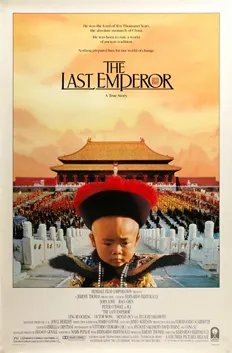Historical accuracy of The Last Emperor

Historical accuracy of The Last Emperor

Characters
Puyi
The film is based on the real life of Aisin-Gioro Puyi, accurately depicting his journey from child emperor in the Forbidden City to puppet ruler of Manchukuo, re-education prisoner, and finally ordinary citizen.
Empress Wanrong
Wanrong was Puyi's real empress consort. The film accurately portrays her initial vibrancy, subsequent isolation, opium addiction, affair, and tragic decline within the confines of her imperial and political life.
Wenxiu
Wenxiu was Puyi's real secondary consort. Her notable act of seeking and obtaining a divorce from Puyi while living in Tianjin, citing neglect, is a key historical event accurately depicted.
Reginald Johnston
Sir Reginald Johnston was Puyi's real tutor from 1919 to 1924. His influential role in Puyi's education and opening his eyes to the world outside the Forbidden City is portrayed accurately.
The Governor (Jin Yuan)
Based on the actual governor of the Fushun War Criminals Management Centre where Puyi was held. The character represents the Communist government's efforts to 're-educate' Puyi.
Empress Dowager Cixi
Cixi was the real Empress Dowager who controlled the Qing dynasty for decades and appointed the infant Puyi as emperor just before her death in 1908. Her brief portrayal is historically accurate.
More characters
Masahiko Amakasu
Amakasu was a real Japanese Imperial Army officer involved in the administration and control of the puppet state of Manchukuo. His role representing Japanese influence over Puyi is accurate.
Eastern Jewel (Yoshiko Kawashima)
Based on the real Yoshiko Kawashima (born Aisin Gioro Xianyu), a Manchu princess raised in Japan who became a notorious spy for the Japanese Kwantung Army. Her flamboyant persona is depicted.
Ar Mo
Ar Mo represents Puyi's real wet nurse, Wang Lianshou, who was his primary maternal figure during his early childhood until she was expelled from the Forbidden City.
Pujie
Pujie was Puyi's real younger brother who shared many aspects of his life, including time in the Forbidden City, Manchukuo, and imprisonment. His presence alongside Puyi is accurate.
The Big Li
This character appears to be a fictional composite representing the influence and traditional roles of the numerous eunuchs serving within the Imperial Court of the Forbidden City.
Story
Puyi's ascension as Emperor
Puyi's enthronement as the Xuantong Emperor at a very young age is a historical fact. The film accurately depicts this event and the lavish ceremony surrounding it.
Life within the Forbidden City
The film provides a detailed and visually impressive portrayal of life within the Forbidden City, including the customs, rituals, and hierarchies of the imperial court. This is a strong aspect of the film's historical accuracy.
Puyi's isolation and upbringing
Puyi's isolated upbringing within the Forbidden City, separated from the outside world, is historically accurate. The film depicts the impact of this isolation on his development and understanding of the world.
The fall of the Qing Dynasty
The film portrays the fall of the Qing Dynasty and the end of imperial rule in China. This was a major historical event that shaped Puyi's life and the country's future.
Puyi's role as a puppet emperor
Puyi was later installed as a puppet emperor by the Japanese in Manchukuo. The film accurately depicts this period of his life and the political manipulations involved.
His imprisonment and re-education
After World War II, Puyi was imprisoned and underwent re-education in a Chinese prison camp. The film portrays this period, including his attempts to adapt to a new reality.
His eventual release and later life
Puyi was eventually released from prison and lived as an ordinary citizen in communist China. The film shows his later years and his reflections on his life.
His relationship with his wives
The film depicts Puyi's relationships with his wives, Empress Wanrong and Li Shuxian. While these relationships were real, the film takes some creative liberties with the details and dynamics of their interactions.
His relationship with Reginald Johnston
Reginald Johnston was Puyi's tutor and a significant influence on his life. The film portrays their relationship, which is based on historical accounts.
Setting
The portrayal of Chinese culture
The film provides a rich and detailed portrayal of Chinese culture, including traditions, customs, and social norms. This is a notable aspect of the film's historical accuracy.
The political context
The film effectively captures the complex political context of China during Puyi's life, including the fall of the Qing Dynasty, the rise of the Republic, the Japanese occupation, and the communist revolution. This provides a strong historical backdrop for the story.
The depiction of the Japanese
The film portrays the Japanese during their occupation of Manchuria. While their role in Puyi's life is historically accurate, the portrayal of individual Japanese characters may be somewhat stereotypical.
